Creating your very own custom Dungeons & Dragons spell can be extremely rewarding for veteran DM’s and players alike. But, what does the process look like in the 2024 Dungeon Master’s Guide? The new DM’s Guide actually offers a lot of flexibility when it comes to making magic of your own.

Related
Dungeons & Dragons: How To Build A Defensive Bastion
Here’s how to build a defensive bastion in D&D!
Of course, there are always a lot of pitfalls to avoid when it comes to homebrewing in D&D. Between proper balancing and making sure damage or healing done feels fair, the process can prove tricky. So, here’s everything you need to know to craft a brand-new spell using the 2024 Dungeon Master’s Guide.
What Does The Spell Do?
This may seem obvious, but the first thing you need to determine when making a new spell is to ask yourself, ‘What does this spell do?’ Here are a few questions you should ask yourself right out of the gate.
- Does This Spell Already Exist? – Before you go any further, make sure that the spell effect you’re trying to achieve doesn’t already exist elsewhere!
- If So, Can I Modify My Spell? – If the spell already exists, see if there’s a way you can tweak your own to make it stand on its own two feet.
- Does This Spell Cause Damage? – Make a note of whether or not you want your spell to cause damage to enemy combatants.
- Does This Spell Heal? – Consider whether or not this is more of a buffing or healing spell as opposed to an attack spell.
- Does This Spell Help With Roleplay Or Social Interaction? – If this spell does not heal or inflict damage, does this spell help with roleplay or social interaction? Or, does it have another effect altogether?
Answering these questions will help give you the basic building blocks of a spell. Jot down a few bullet points on your spell’s effects before proceeding.
Keep in mind it’s also important that the spell’s purpose shouldn’t be too specific. For example, if the spell’s only use is to target one specific type of monster, or diffuse a certain kind of trap, then its use is probably too limited.
You likely won’t get your players interested in learning a spell like this if there are too few chances to actually use it in play.
How To Create Spell Rules
After you’ve figured out exactly what you want the spell to do, it’s time to craft the spell’s ruleset. This covers everything a player or a DM will need in order to run the spell during a campaign. Here are the basic rules you’ll want to make sure you have covered.
School Of Magic
You’ll also want to consider what School of Magic your spell belongs to. Depending on the spell’s abilities, you’ll want to make sure that the description of your spell matches the appropriate School of Magic. There are eight schools in total.
- Abjuration – These are protective spells that either create shields or interfere/cancel other spells cast by magic users.
- Conjuration – These spells summon creatures or can teleport allies.
- Divination – This school focuses on portents and the ability to identify magical objects, traps, or other effects.
- Enchantment – Charming or influencing other creatures is a key tenet of enchantment. Spells that effect a creature’s mind like Geas are typically enchantment spells.
- Evocation – These are elemental spells that deal high damage, like Fireball.
- Illusion – Classic spells like Minor Illusion belong to this school. Illusion magic focuses on deception and persuasive spells.
- Necromancy – Interfering with the barrier between life and death is the bread and butter of a necromancer.
- Transmutation – Spells that transform or otherwise alter physical reality belong to the transmutation school of magic.
If you’re having trouble determining what elements need to be considered for your spell, or what school of magic your spell belongs to, consult a similar spell from the Player’s Handbook.
For example, if your spell allows you to magically create poison darts and fling them through the air, consult the ruleset for a similar spell like Magic Missile or Melf’s Acid Arrow for inspiration.

Related
Dungeons & Dragons: What Is Homebrew?
What is homebrew, and how do you do it? We’ve got several resources to help you get started with understanding and creating homebrew content in D&D.
How To Balance The Spell
Once you’ve answered the above questions and written out the ruleset for the spell, you’re ready to start balancing. The most important element of balancing a ruleset is being certain that the ruleset is balanced and fair for both players and DMs. Here are some general balancing questions you should ask yourself when making your ruleset.
- Is The Spell Too Powerful? – If the spell’s effect is too game-breaking, or too low-level given its effects, consider if the spell needs to be nerfed. Consider how often you or your player is using the spell. If they’re using it too often, it might be too powerful.
- Is The Spell Too Weak? – If you notice your players are not using your spell, it might be too weak. Does the spell not do enough in practice to actually alter the trajectory of the game? Consider how you can make the spell more effective if so.
- Are The Rules Of The Spell Too Constrictive? – As a general rule, consider whether things like duration, concentration, or range might be making this spell too constrictive to use in play. For example, a combat-based spell that requires ten minutes to cast isn’t going to be very effective.
If you’re not sure of the answers to the above questions, there’s one surefire way to find out. Playtest the spell. The best way to find out if something is working or not is to try it in your campaign. You can always tweak it later if it’s not.
Determine Damage And Healing
Once you feel that the overall effects of the spell are balanced, you should then determine how much damage or healing your spell does. Generally speaking, when it comes to balancing these numbers, you should base it on the spell’s level. The 2024 DM’s Guide offers the below balancing table for reference.
|
Spell Level |
Single Target |
Multiple Targets |
|---|---|---|
|
Cantrip |
1d10 |
1d6 |
|
1 |
2d10 |
2d6 |
|
2 |
3d10 |
3d6 |
|
3 |
5d10 |
6d6 |
|
4 |
6d10 |
7d6 |
|
5 |
7d10 |
8d6 |
|
6 |
10d10 |
11d6 |
|
7 |
11d10 |
12d6 |
|
8 |
12d10 |
13d6 |
|
9 |
15d10 |
16d6 |
Beyond the above though, you should also consider whether the spell would be more balanced by rolling multiple dice of lower value rather than one high-level dice like a d10 or d12. This tends to average out your damage rolls so that they’re less destructive. The same goes for healing spells as well.
How To Make The Spell Unique
Now that you’ve written your ruleset, balanced your spell, and determined its overall use, the last step is to make your spell unique. This is the fun part, and you shouldn’t overlook this step. Consider the following to make your spell a special creation all its own!
|
Spell Components |
What To Do |
|---|---|
|
Naming Conventions |
Lots of spells have fun and unique names in D&D! Make sure the name feels flavorful and conjures an immediate idea of what the spell does. If your player character is making up the spell-in universe, consider adding the character’s name to it as is the convention for spells like ‘Tasha’s Hideous Laughter.’ |
|
Visual Description |
When you fill in the description of the spell, make sure you’re using visual adjectives and cues to bring the spell to life. Don’t just list damage or rules. Have fun with it. |
|
Material Components |
One of the best ways to flavor a spell is with Material Components. If you want to balance your spell to make it more difficult to use, consider a Material Component with a cost prerequisite. This is something like a diamond worth 500 gp. Or, you can just add fun flavor here. For example, a spell like Grease requires a stick of butter to cast, which can make for fun roleplay at the table. |
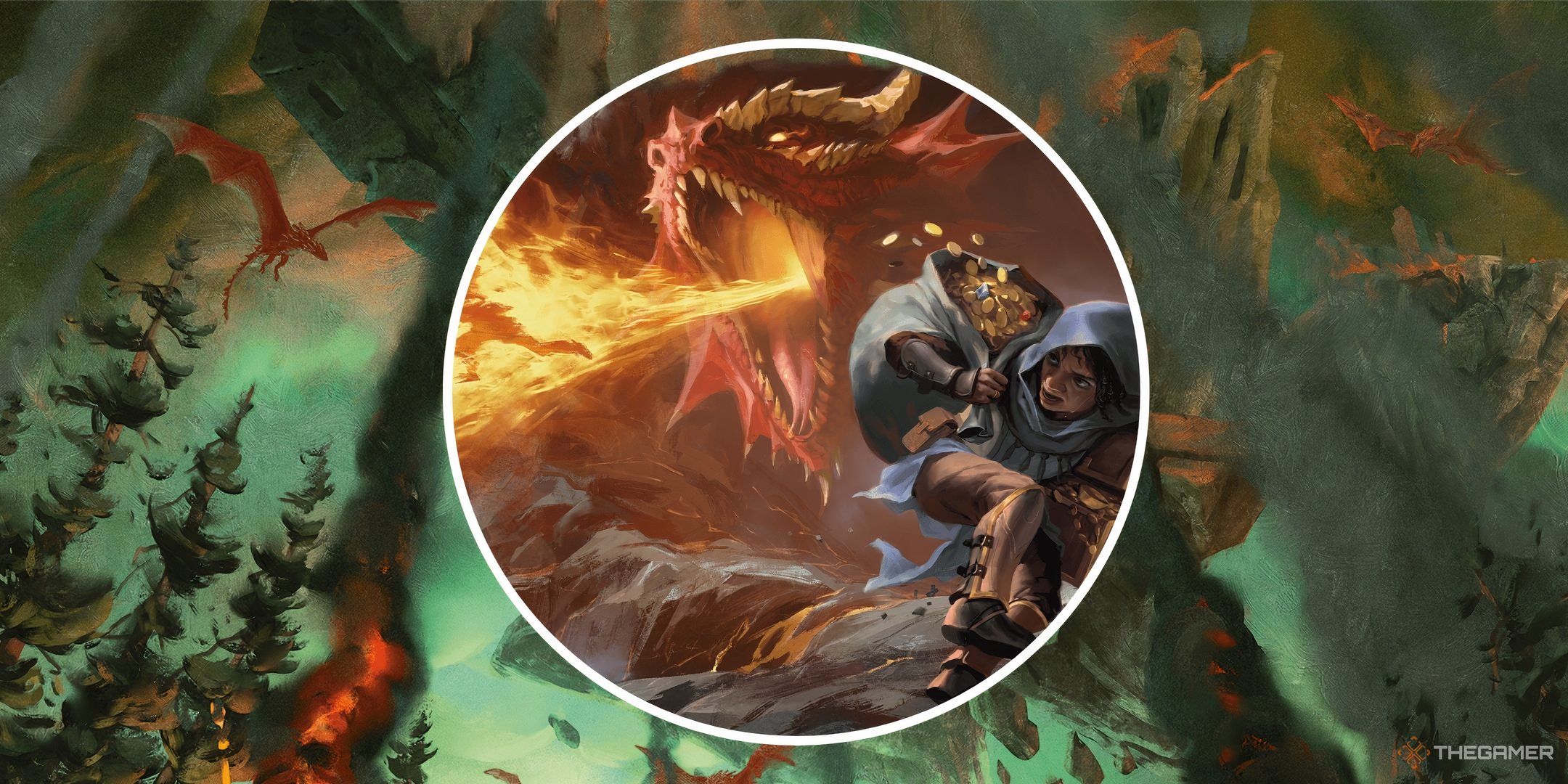
Next
Dungeons & Dragons: How To Create Unconventional Combat Objectives
Creating some unconventional combat objectives is an easy way to get your players thinking in your DnD campaign.
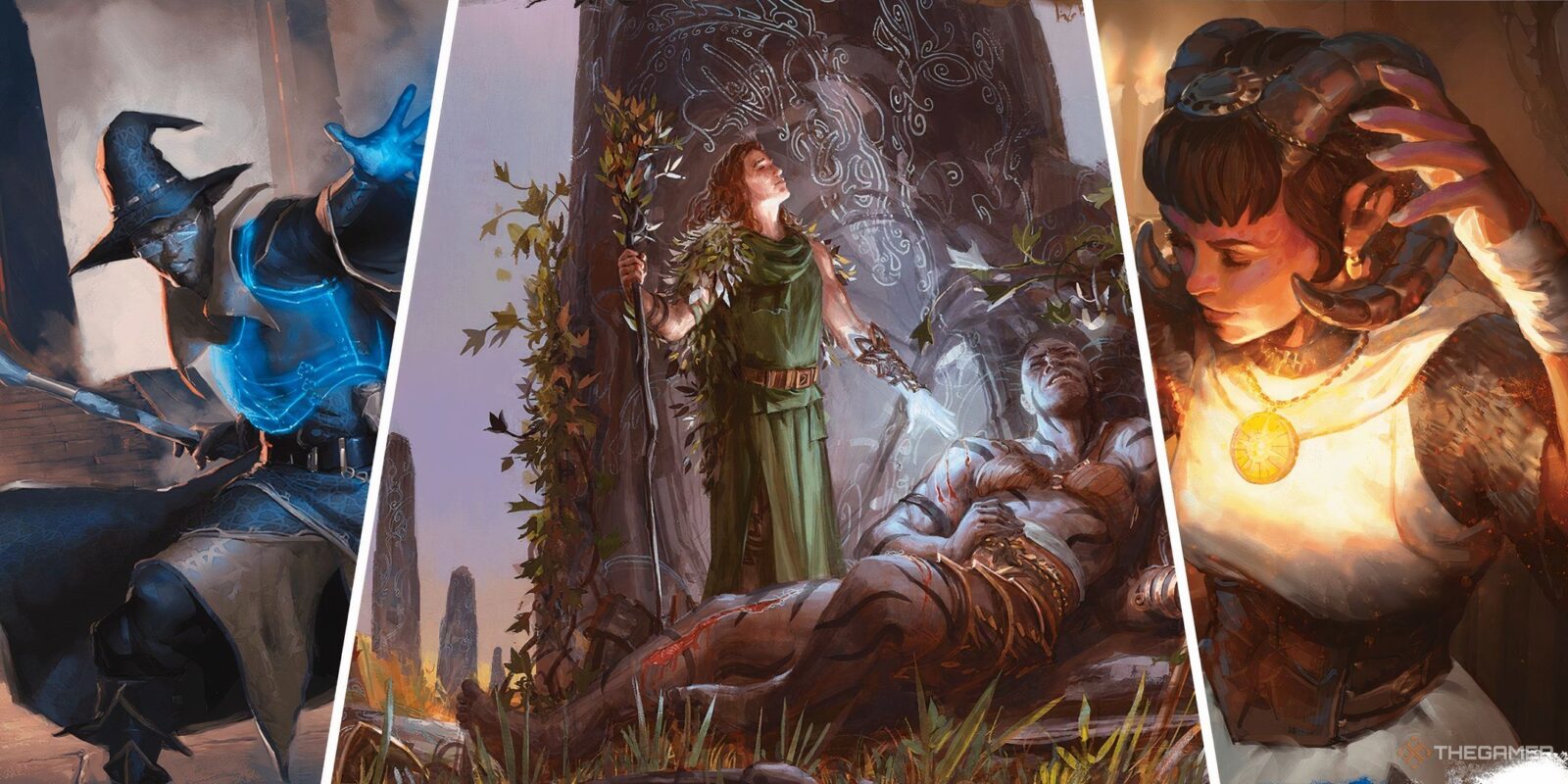



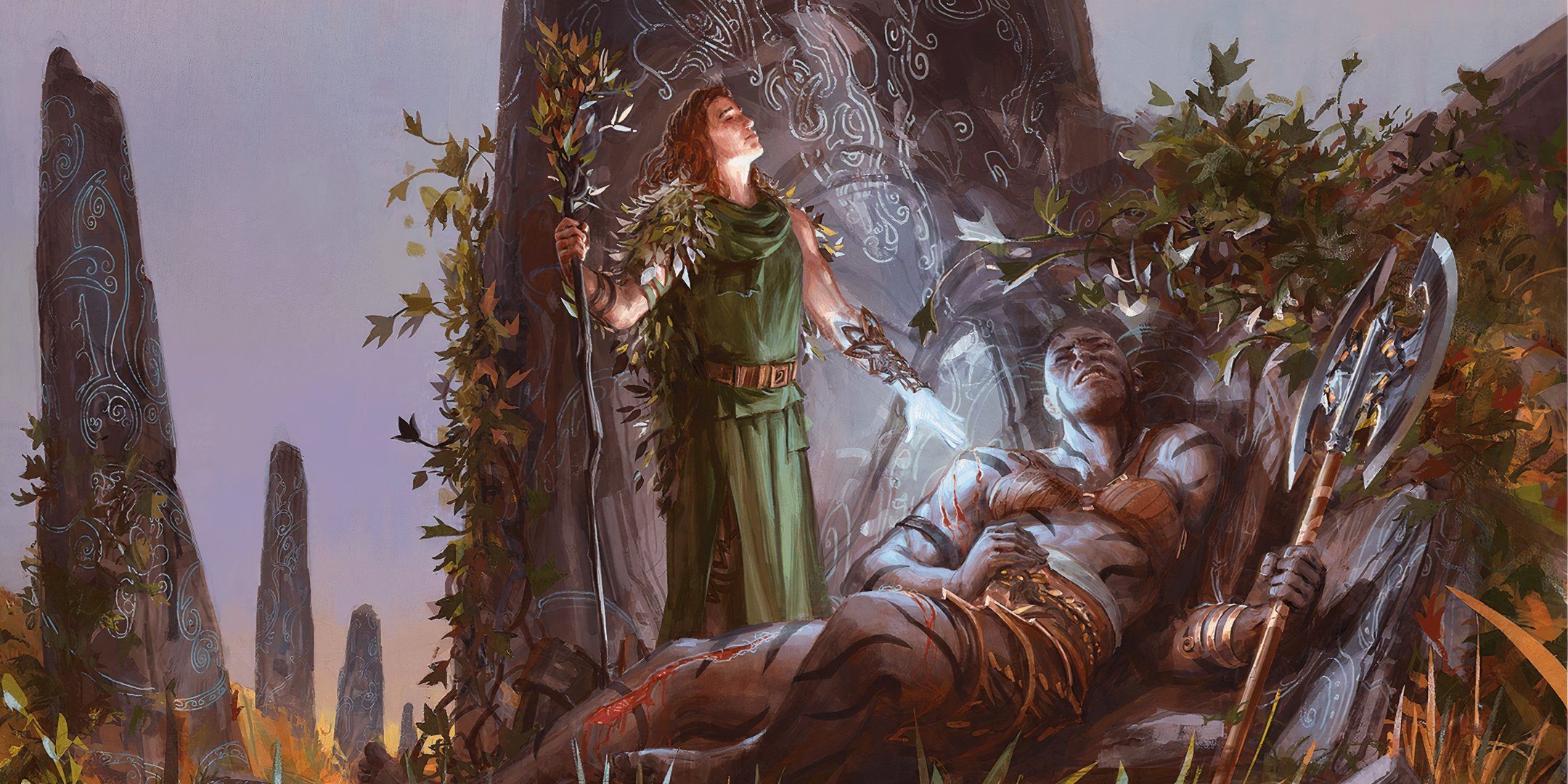
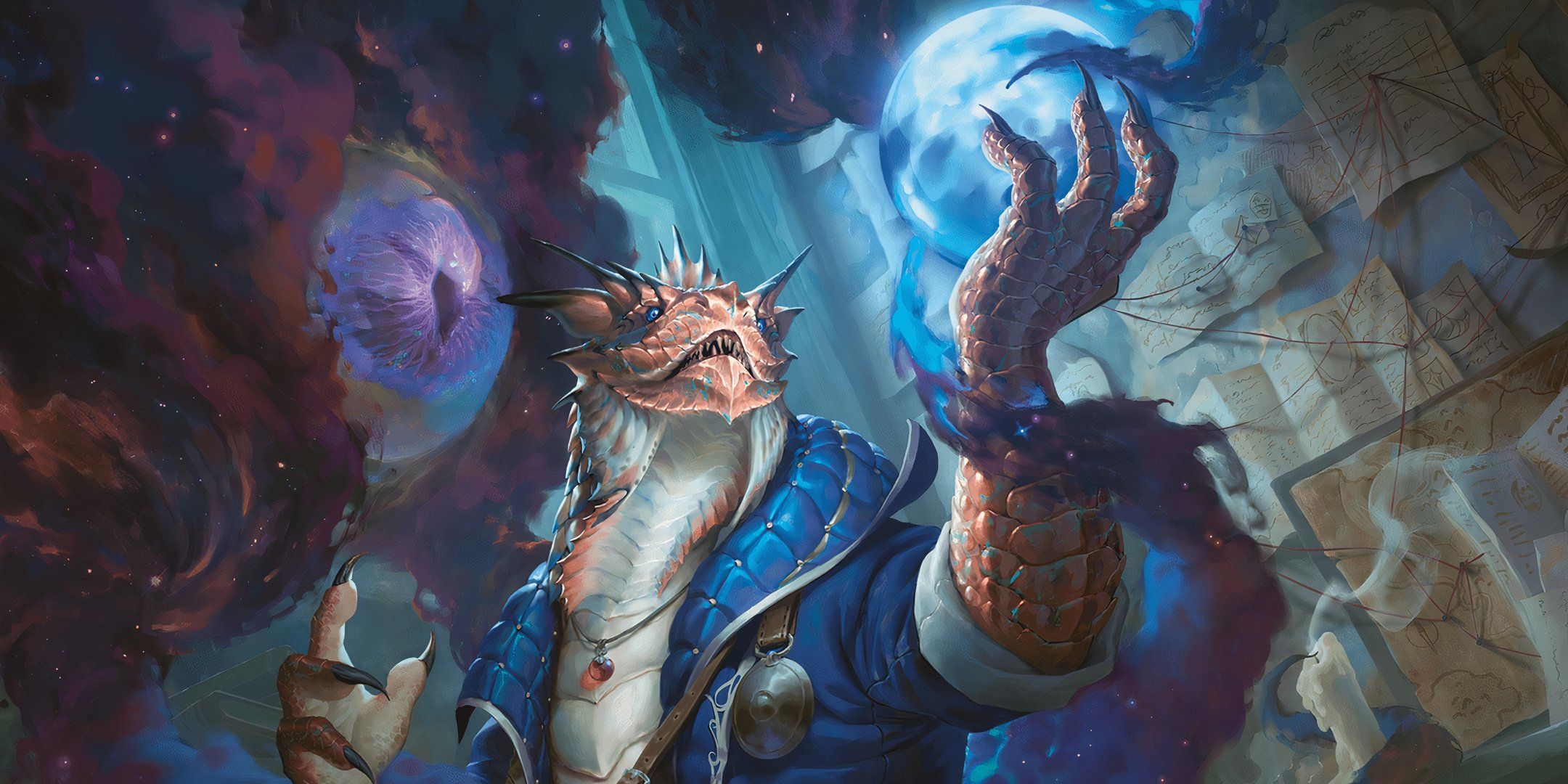









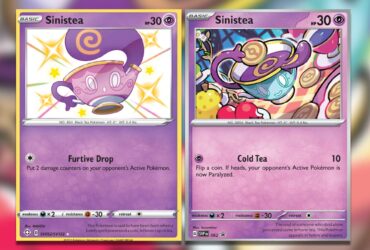
Leave a Reply